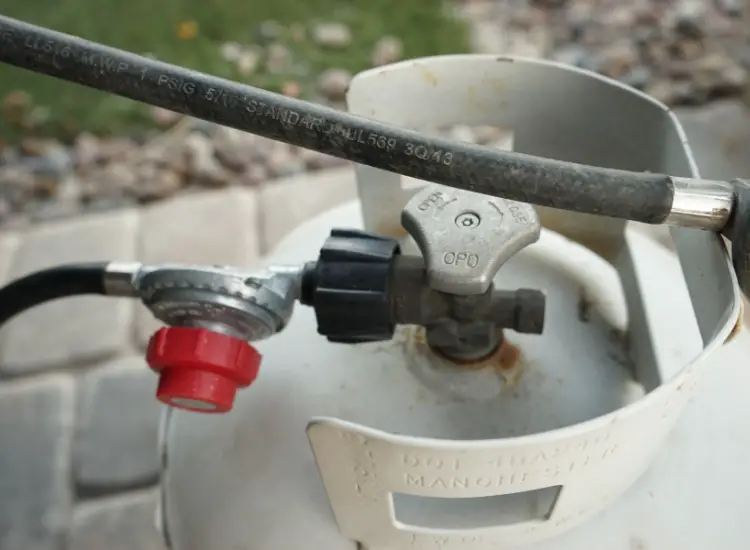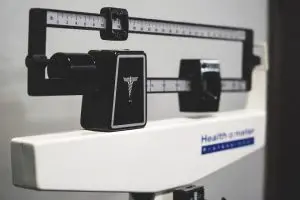Can You Refill a 1lb Propane Tank? Here’s What You Need to Know

Can you refill a 1lb propane tank? You’ve probably read about this – quite a bit. Well, the answer is both yes and no, depending on the specific circumstances.
Propane tanks are typically disposable, which means they are not designed to be refilled. However, there are refill adapters available in the market that allow you to refill these small tanks. These adapters connect to a larger propane tank, such as a 20lb tank commonly used for grills, and transfer the propane into the smaller tank.
Sooo, in this article, we’ll dive into the world of 1lb propane tanks, exploring their uses, regulations, and the different methods available to refill them. Whether you’re camping, grilling, or using propane for other purposes, keep reading to find out if refilling a 1lb propane tank is the right option for you.
Quick Links
Benefits of Refilling a 1lb Propane Tank
Refilling a 1lb propane tank offers several advantages over buying new tanks. Here are some of the benefits of refilling your propane tank:
- Cost savings: Refilling your propane tank is usually more cost-effective than purchasing a new one. Refilling allows you to pay only for the propane you need, rather than buying a new tank every time.
- Environmental friendliness: Refilling your tank helps reduce waste because you can reuse the same container multiple times instead of discarding single-use tanks.
- Convenience: Refilling your propane tank can be more convenient than purchasing a new one. Depending on your location, there may be refill stations available nearby, saving you time and effort.
- Availability: Refill stations are often more accessible than retailers that sell new tanks. This means you’re more likely to find a refill station nearby, especially in rural areas where retail stores may be limited.
- Control over propane quality: By refilling your tank at a trusted refill station, you have more control over the quality of the propane being used. This can provide peace of mind knowing that you have a reliable source of propane for your needs.
Overall, refilling a 1lb propane tank can save you money, reduce waste, and offer greater convenience and control over your propane supply. Consider finding a refill station near you for a more economical and environmentally friendly propane solution.
Where to Refill a 1lb Propane Tank
When it comes to refilling a 1lb propane tank, there are various options available. Whether you are looking for convenience or cost-effectiveness, it’s important to know where you can refill your propane tank. Here are some common places to consider:
Outdoor Supply Stores
Many outdoor supply stores, such as camping equipment stores or hardware stores, offer propane tank refilling services. These stores typically have a designated area for propane tank refills and can help you safely refill your 1lb tank. The advantage of refilling at these stores is that they often have knowledgeable staff who can assist you and provide guidance.
Gas Stations
Some gas stations have propane refill stations where you can fill up your 1lb tank. These stations usually have a propane dispenser where you can self-service your refill. Keep in mind that not all gas stations offer this service, so it’s a good idea to call ahead or check their website to confirm availability.
Propane Retailers
Propane retailers, such as propane dealers or suppliers, often have refill stations available for customers. These stations are specifically designed for propane refills and are equipped to handle different sizes of tanks, including 1lb tanks. Contact your local propane retailer to inquire about their services and refill options.
Exchange Programs
Some stores and retailers offer propane tank exchange programs where you can trade your empty 1lb tank for a full one. These programs can be found at various locations, including grocery stores, home improvement stores, and convenience stores. While this option may be more convenient, keep in mind that you may not receive your original tank back and there may be additional costs associated with the exchange.
When choosing a place to refill your 1lb propane tank, consider factors such as cost, convenience, and availability. It’s also important to follow safety guidelines and instructions provided by the refill station to ensure a proper and safe refill process.
Propane Tank Refill vs. Replacement: Pros and Cons
When it comes to propane tanks, there are two main options: refilling an existing tank or replacing it with a new one. Each option has its advantages and considerations. Here are the pros and cons of propane tank refill and replacement:
Propane Tank Refill
Refilling a propane tank can offer several benefits:
- Cost savings: Refilling a propane tank is generally more cost-effective than purchasing a new one. It allows you to pay only for the propane you need, rather than buying a whole new tank.
- Environmental sustainability: Refilling a tank promotes sustainability by reusing materials instead of disposing of them. It helps reduce waste and minimize the environmental impact.
- Convenience: Refilling a propane tank is usually a quick and straightforward process. Many refill locations are available, making it convenient to get your tank replenished when needed.
Propane Tank Replacement
Replacing a propane tank also has its advantages, although there are some considerations to keep in mind:
- New tank warranty: Purchasing a new propane tank often comes with a warranty or guarantee, providing peace of mind in case of any issues with the tank.
- Upgraded features: New propane tanks may offer improved safety features, enhanced durability, or updated technology compared to older models.
- Availability: In some cases, it may be challenging to find a refill location nearby. If refilling is inconvenient or not feasible, replacing the tank ensures you always have a full tank ready for use.
Ultimately, the choice between propane tank refill and replacement depends on factors such as cost, convenience, and personal preferences. Assessing your specific needs and considering these pros and cons can help you make an informed decision for your propane tank requirements.
Safety Considerations when Refilling a 1lb Propane Tank
Refilling a 1lb propane tank can be a convenient and cost-effective way to ensure a steady supply of propane for portable grills, heaters, or camping stoves. HOWEVER — it is important to follow proper safety precautions to prevent accidents or injuries. Here are some key safety considerations when refilling a 1lb propane tank:
- Use a certified refill adapter: Make sure to use a certified refill adapter that is compatible with your specific 1lb propane tank. Using an uncertified or improper adapter can lead to leaks or other hazards.
- Inspect the tank for damage: Before refilling, carefully inspect the tank for any signs of damage, such as dents, corrosion, or leaks. Do not attempt to refill a damaged tank as it can be hazardous.
- Ensure proper ventilation: Refilling should be done in a well-ventilated area to prevent the accumulation of propane fumes. Avoid refilling indoors or in confined spaces.
- Follow the manufacturer’s instructions: Always refer to the manufacturer’s instructions for the specific refill adapter and propane tank being used. The instructions will provide guidance on proper refilling procedures and any additional safety precautions.
- Use safety equipment: Wear protective gloves and goggles to protect yourself in case of any propane leaks or spills. Keep a fire extinguisher nearby as a precautionary measure.
- Avoid overfilling: Do not overfill the 1lb propane tank. Follow the recommended fill level indicated by the manufacturer to prevent leaks or pressure buildup.
- Check for leaks: After refilling, check for any signs of propane leaks. Apply a soapy water solution to the valves and connections and look for bubbles, which indicate leaks. If any leaks are detected, stop using the tank and seek professional assistance.
- Transport and store safely: After refilling, ensure the tank is stored and transported in an upright and secure position. Avoid exposing the tank to extreme heat or direct sunlight, as high temperatures can increase internal pressure and pose a safety risk.
It is important to prioritize safety when refilling a 1lb propane tank. If you are unsure about the refilling process or have any concerns, it is recommended to seek professional assistance or consult with a propane supplier or expert.
How Much Does it Cost to Refill a 1lb Propane Tank?
If you’re wondering about the cost of refilling a 1lb propane tank, it’s important to consider a few factors that may affect the price. The cost can vary depending on your location, the supplier or retailer you visit, and any additional fees or taxes that may apply.
On average, the cost to refill a 1lb propane tank can range from $3 to $7. However, it’s always a good idea to check with local suppliers or retailers to get the most accurate and up-to-date pricing information in your area.
Steps to Refill a 1lb Propane Tank
- Gather necessary supplies: You will need a 20lb propane tank, a propane tank refill adapter, and a scale to weigh the tanks.
- Check for safety: Ensure that both tanks are in good condition, without any leaks or damage.
- Attach the refill adapter: Connect the refill adapter to the 20lb propane tank, ensuring a secure and tight fit.
- Weigh the tanks: Place the 1lb propane tank on the scale and record its weight. Then, place the 20lb tank on the scale and note its weight as well.
- Transfer propane: Open the valve on the 20lb tank and turn it upside down, while keeping the 1lb tank upright. This will allow the propane to transfer from the larger tank to the smaller one.
- Monitor the transfer: Keep an eye on the scale and monitor the weight readings. Once the desired amount of propane has been transferred, close the valve on the 20lb tank.
- Check for fullness: Carefully remove the refill adapter from the tanks and check the weight of the 1lb tank. It should be slightly heavier, indicating that it is now filled with propane.
- Safely disconnect the tanks: Close the valve on the 1lb tank and remove it from the scale. Disconnect the refill adapter from both tanks.
- Test for leaks: Apply a solution of soapy water to the valve and connections of the filled 1lb tank. If bubbles form, there may be a leak. In such cases, do not use the tank and seek professional assistance.
Properly refilling a 1lb propane tank allows you to save money and reduce waste. However, it is important to follow safety guidelines and exercise caution when handling propane. If you are unsure or uncomfortable with the refilling process, it is recommended to seek assistance from a professional propane service provider.
Tips for Extending the Lifespan of a 1lb Propane Tank
Okay, let’s face it. A 1lb propane tank doesn’t last that long, right? You want the most bang for your buck – I get it. To ensure you get the most out of your 1lb propane tank, here are some tips to extend its lifespan and maximize its usage:
- Store in a cool, dry place: Proper storage of the propane tank helps prevent rust and corrosion, which can shorten its lifespan. Find a cool and dry location, away from direct sunlight or extreme temperatures.
- Inspect for damage: Regularly examine the propane tank for any signs of damage, such as dents, corrosion, or leaks. Replace the tank if it shows significant deterioration.
- Use a regulator: A regulator helps control the flow of propane and ensures consistent pressure. It also protects your appliances from potential damage. Always use a compatible regulator with your 1lb propane tank.
- Keep the tank upright: Storing and transporting the propane tank in an upright position reduces the risk of gas leaks and potential accidents.
- Only use for intended purposes: 1lb propane tanks are designed for smaller appliances and portable use. Avoid using them with larger appliances that require higher fuel capacity. It’s important to follow the manufacturer’s guidelines and instructions.
- Use in a well-ventilated area: When using a 1lb propane tank, make sure you do so in a well-ventilated outdoor area. Propane releases carbon monoxide, which can be dangerous when confined in enclosed spaces.
- Turn off the valve: After using the propane tank, remember to turn off the valve to prevent gas leakage. This also helps preserve the remaining fuel for future use.
- Be mindful of the fuel level: Keep track of the amount of propane remaining in the tank. This ensures that you have enough for your planned activities and minimizes the chances of unexpectedly running out of fuel.
- Follow proper disposal guidelines: When the tank is empty and no longer usable, dispose of it responsibly. Check with your local waste management authority or recycling centers for proper disposal procedures to avoid environmental harm.
By following these tips, you can extend the lifespan of your 1lb propane tank and make the most of its portability and convenience for your outdoor needs.
Alternatives to Refilling a 1lb Propane Tank
If you’re in need of propane for your camping grill or other outdoor appliances, but don’t want to go through the hassle of refilling a 1lb propane tank, there are several alternatives to consider. These alternatives offer convenience and can help ensure that you have a steady supply of propane when you need it. Here are some options to consider:
- Exchange Programs: Many hardware stores and home improvement centers offer propane tank exchange programs. Instead of refilling your tank, you simply exchange it for a pre-filled one. This can be a quick and convenient option, especially if there is a participating location nearby.
- Larger Propane Tanks: If you frequently use propane for outdoor cooking or heating, consider investing in a larger propane tank. These tanks often have a higher capacity, reducing the need for frequent refills. You can connect your grill or appliances directly to the larger tank using a propane hose and regulator.
- Propane Delivery Services: Some propane companies offer delivery services, where they bring a refilled propane tank right to your doorstep. This can be a convenient option if you prefer not to leave your home or if you have difficulty transporting a propane tank.
- Portable Propane Cylinders: Instead of refilling a traditional 1lb propane tank, you can opt for portable propane cylinders. These smaller, disposable cylinders are often used for camping stoves and portable grills. Once empty, you can simply discard them and replace them with new ones.
Consider your needs and preferences when choosing an alternative to refilling a 1lb propane tank. Whether it’s through exchange programs, larger tanks, delivery services, or portable cylinders, you can find a solution that works best for you.
Conclusion
Refilling a 1lb propane tank offers some decent benefits over buying new tanks. It is more cost-effective, environmentally friendly, and convenient. Various options are available for refilling, including outdoor supply stores, gas stations, propane retailers, and exchange programs.
HOWEVER, it is essential to prioritize safety (and especially, regulations) when refilling a propane tank by using certified refill adapters, inspecting the tank for damage, ensuring proper ventilation, and following manufacturer’s instructions.
By following proper refilling steps and extending the tank’s lifespan through proper storage and usage, you can make the most of your 1lb propane tank. Consider alternatives to refilling, such as exchange programs, larger tanks, propane delivery services, or portable cylinders, based on your specific needs and preferences.







